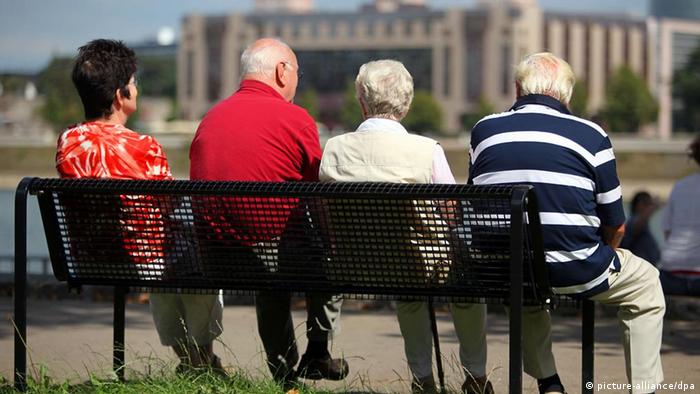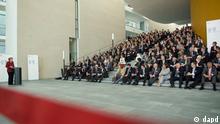恣訂瘦肉精容許量 消基會砲轟衛署yam天空新聞
消基會質疑衛生署訂出容許攝取量是準備開放含瘦肉精的美牛,瘦肉精仍是禁藥,討論瘦肉精容許攝取量有違程序正義,消基會要求完成風險評估前,暫緩研議。 ▲消基會等團體不滿衛生署食藥局於11日召開會議,訂出萊克多巴胺每日每公斤容許量(ADI)為1微克/公斤,22日召開 ...
查看有关本主题的所有报道 »趁油電雙漲/衛署偷襲 擅訂瘦肉精容許量1微克
 |
|
|
|
 |
|
|
 |
 |
 |
 |
|
|
 Is there a meaningful difference between natural and synthetic additives? Is there a meaningful difference between natural and synthetic additives?
 Is allergy a problem with additives? Is allergy a problem with additives?
 How is the ADI for an additive determined? How is the ADI for an additive determined?
 Is there intolerance to food additives? Is there intolerance to food additives?
 Interactive site map. Interactive site map.
|
|
|
 |
 |
|
Acceptable Daily Intake
The Acceptable Daily Intake, or ADI, is
defined as an estimate of the amount of a food additive, expressed on a
body weight basis, that can be ingested daily over a lifetime without
appreciable health risk. It is measured in milligrams per kilogram of
body weight.
The concept of the ADI was initially developed by
the Joint FAO/WHO Expert Committee on Food Additives, or JEFCA. It was
later endorsed by the Scientific Committee on Food, and its successor,
the European Food Safety Authority (EFSA).
How is the ADI for an additive determined?
It is usually
derived from long-term animal feeding studies. First, the No Adverse
Effect Level is determined, which is the highest dose of an additive
that can be fed to the most sensitive animal species on a daily basis
with no toxic effects. A large safety factor is then added – usually by
dividing the level in animals by 100 – to arrive at a safe level for
humans. For example, if the no effect level in animals is found to be
100mg/kg, then the human ADI would be set at 1mg/kg.
The safety
factor is built in partly to account for the differences between animals
and humans, and also to allow for the variability between different
people, such as age, health and how well nourished they are.
The
ADI is not a level of toxicity – it is a level that has been found to be
safe. Consuming more than this on occasions is unlikely to cause health
problems, as long as the average daily intake is below the ADI. It
should always be compared with average consumption levels over long
periods, not with intakes on a day-to-day basis.
ADI has been
proved to be the best practical tool available for legislators. It has
contributed to a uniform approach around the world to express the safety
of a substance in relation to human consumption levels of additives.
|
|
自由時報
消基會及醫界昨日揭露,衛生署訂出萊克多巴胺每人每日每公斤體重攝取容許量(ADI)一微克,以國人食肉的習慣推算,肉品殘留允許值(MRL)應介於六到六十ppb,如果訂出十ppb上限值,以六十公斤體重的人為例,吃六公斤的肉就會達到容許值;民間團體強烈呼籲在未完成 ...
查看有关本主题的所有报道 »
Maximum Residue Limits (MRLs) and the
Safety of Food from Animals
Residues of veterinary medicinal products, as defined by the European
Union, are "pharmacologically active substances (whether active principles,
excipients or degradation products) and their metabolites which remain in foodstuffs
obtained from animals to which the veterinary medicinal product in question has been
administered".
An MRL is the maximum concentration of residue following administration
of a veterinary medicine which is legally permitted or acceptable in food under the laws
of the EU.
The responsibility for keeping residues under the MRL lies with
veterinary surgeons and farmers, using licensed animal medicines.
Use of animal medicines is strictly controlled by European law, and
requires observance of the withdrawal period. This is the time which passes between
the last dose given to the animal and the time when the level of residues in the tissues
(muscle, liver, kidney, skin/fat) or products (milk, eggs, honey) is lower than or equal
to the MRL. Until the withdrawal period has elapsed, the animal or its products must not
be used for human consumption.
The withdrawal period is set out in the data sheet for the medicine and
in the instructions for use which are part of the product packaging. Farmers are required
by law to record all uses of animal medicines; it is therefore straightforward to ensure
that withdrawal periods are observed.
Withdrawal periods exist so that MRLs are not exceeded and to ensure
consumer safety. Accordingly, safety is of paramount importance when both MRLs and
withdrawal periods are established and the legislators always err on the side of caution.
As a result, although residues above the MRL should not occur, even if they
do, they generally present no risk to the consumer because of the very large
safety margins used in setting the MRL.
For example, the calculation of the MRL value is based on the
acceptable daily intake (ADI; see below) for the drug in question. The calculation of the
ADI includes an extremely large safety factor. In addition, the MRL calculation assumes an
average intake per person of 500g of meat (over a pound!), 1.5 litres of milk (over 2.5
pints!), 2 eggs and 20g (nearly an ounce) of honey. Legislators might be well advised to
consider the health implications for obesity and cholesterol levels!
Residues Surveillance
In the UK, farmers and veterinarians have an excellent track
record of observing the regulations - and measures are in place to ensure things stay that
way. As part of that effort, the
Veterinary Medicines
Directorate (VMD) operates two complementary surveillance programmes for residues of
veterinary drugs in food of animal origin to ensure that residues above the MRL do not
occur and that prohibited or illegal drugs are not being used:
Statutory Programme
A statutory programme fulfils the UK's obligations under Directive
96/23/EC. This Directive extended the previous statutory residues testing programme to
poultry and aquaculture (salmon and trout), eggs, wild and farmed game and honey, and
changed the previous regime for red meat by requiring a higher number of samples to be
taken on farm with a consequent reduction in sampling at slaughterhouses.
Each year samples are collected from randomly selected farms and abattoirs by the State
Veterinary Service (SVS) and the Meat Hygiene Service and analyses performed.
In 2003 there were some 30 975 samples collected and 35 399 analyses
performed. Analysis is carried out by the
Laboratory of the Government Chemist and results are published by the Veterinary Medicines
Directorate quarterly, and annually by the
Veterinary Residues Committee (VRC). The results are presented for
independent scrutiny at meetings of the VRC during the year. All the results
are also seen by the Food Standards Agency. They can give a scientific
opinion on the significance for human health.
In 2003 the VRC said that overall, the results of the
National Surveillance Scheme indicate that the UK authorised uses of
veterinary medicinal products did not result in residues of human health
concern.
Follow-up action is taken by the State Veterinary Service on every
sample which on confirmatory analysis shows the presence of unauthorised substances or
concentrations of authorised substances above the MRL. A thorough on-farm investigation is
carried out, with farmers advised how to avoid residues of veterinary medicines entering
the food chain. If inspection of farm records and stock and the taking of further samples
reveals clear evidence of abuse, the farmer will be prosecuted.
Non-Statutory Programme
A non-statutory programme supplements and complements the
National Surveillance Scheme, extending residue analysis to imported and
processed foods. It gives valuable information on foods that do not fall
within the NSS.
Samples are taken from popular presentations of meat and
animal products, collected from shops and at the border inspection posts.
Samples are subjected to a range of analyses by the Central Science
Laboratory in York. In 2003, there were 5468 analyses, targeted in
particular foods where intelligence had suggested the possible presence of
banned substances being used as veterinary medicines.
Retailers are informed by VMD of any "positive" samples
purchased from their stores, and consumer organisations, local authorities, relevant trade
associations and producers are contacted where appropriate to make them aware of the
results.
If the products are imported, the SVS will contact the Chief Veterinary
Officer of the country concerned. There are powers under the Food Safety Act to remove
from the food chain food products containing residues at concentrations which represent a
danger to human health.
In addition to these schemes, milk is tested for antibiotic residues by
the dairy companies and heavy penalties face dairy farmers whose milk fails to meet the
necessary requirements. Food retailers and processors also frequently carry out their own
checks.
How MRLs are set
Maximum Residue Limits are set by the European Commission after
adoption by the Standing Committee, following an opinion of the Committee for Veterinary
Medicinal Products (CVMP). Manufacturers apply for an MRL, supplying the CVMP with two
dossiers of information - on safety and residues - from which they can make their
assessment.
The Safety Dossier contains all the pharmacology and toxicology
studies carried out with the medicine in laboratory animals.
These studies examine what happens to the substance in the body and
assess how much can be given safely, without inducing any unwanted adverse effects.
The safety dossier also includes the calculation of the ADI referred to
earlier. This is based on results in laboratory animals and particularly on the so-called
No-Observed-Effect Level (NOEL), the dose with no observable effect in the most sensitive
test used.
The
World Health Organisation
recommends that once the NOEL has been determined, a safety factor of between 100 and 1000
(usually depending on the type of effect) is applied to derive the ADI.
The Residues Dossier contains all the data concerning the
formation, nature, behaviour and disappearance of residues after a medicine has been given
to a farm animal.
Together, the results from the residues file on the quantities and
behaviour of residues in farm animals, with the ADI derived from the safety file and the
theoretical food intakes mentioned earlier (500 g meat, 1.5 litres of milk etc) are used
to calculate the MRL(s), on the assumption that consumers get the maximum level every day
of their lives.
Determining MRLs is a requirement of European legislation under a
Council Regulation (2377/90). Under this legislation, substances must be entered into one
of four annexes to the Regulation:
Annex I: Final MRLs
The data in the dossier are considered adequate to establish a final
MRL.
Annex II: MRLs not necessary
The data in the dossier demonstrate that there is no risk to the
consumer and MRLs are not needed.
Annex III: Provisional MRLs
This is for medicines where MRLs can be established but some
clarification of further studies are required before final MRLs can be set.
Annex IV
Residues of the the medicine pose an unacceptable risk to the consumer
or there is insufficient information to allow a full assessment. The products in Annex IV
are prohibited for use in food producing animals in the European Union.
No new medicine can be licensed or sold for use in food producing animals
until its active ingredients have been entered into Annexes I, II or III of the
Regulation.
Conclusion
Considerable research effort is put into developing the safety
and residues dossiers for veterinary medicines so that the ADI values can be calculated,
MRLs set and withdrawal periods established. This process, together with residues
monitoring to ensure that residues above the MRL do not occur and that prohibited drugs
are not used serves to ensure safety for the consumer, especially as large safety factors
are built in at several stages of the process.
Violations of MRLs or the uses of prohibited substances, detected under
the surveillance programme, are investigated and, where appropriate, are prosecuted. Legal
sanctions can be taken against individuals who ignore instructions on the proper use of
products.
Further reading:










 The Chancellery was packed to hear Merkel discuss demographics
The Chancellery was packed to hear Merkel discuss demographics






